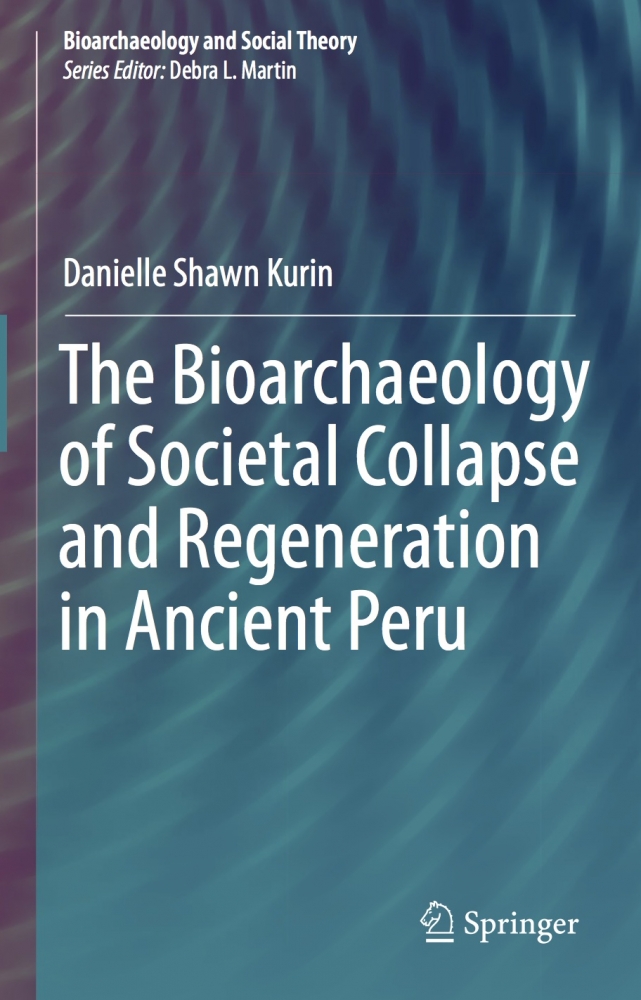Societal Collapse and Regeneration

In her new book, “The Bioarchaeology of Societal Collapse and Regeneration in Ancient Peru” (Springer, 2016), anthropologist Danielle Kurin explores how individuals, small groups and, indeed, entire populations are directly affected by the dynamic and chaotic decline of a society that once seemed timeless.
An expert in Latin American culture and history, Kurin, an assistant professor of anthropology at UC Santa Barbara, investigates the abrupt and catastrophic demise 1,000 years ago of the Wari Empire. Residing in the central Andes, the Wari reigned 500 years over a territory the size of modern-day Peru.
According to Kurin, the reasons for the empire’s decline remain murky. But after the fall, a grueling post-collapse “Dark Age” enveloped the region for roughly four centuries. “Finally, around 1400 A.D., the well-known Inca society came to power and established a new empire that would soon encompass the entire spine of South America,” she said. “It was an immense territory that, if centered in the Old World, would stretch uninterrupted from London to Tehran.
“Of course, history — in the form of Spanish colonial chronicles — famously related the dramatic defeat of the disease-weakened and civil war-ravaged Inca,” Kurin continued, “which ushered in yet another new, European imperial age on the New World continent.”
Yet more intriguing than the successive waves of imperial conquest, she noted, is the often overlooked interstitial era that was bookended by the fall and rise of the two major prehistoric Peruvian empires. The nature of society during the “dark” period has long been a mystery — until now.
As part of her research, Kurin, a bioarchaeologist and forensic anthropologist, studied hundreds of skeletons belonging to both the last remnants of the imperial Wari population, and to the formidable but enigmatic people called the Chanka, whose society coalesced in the ashes of the ruined Wari state. “Yet unlike their imperial counterparts, the Chanka had built no grand capital and no large, elaborate cities governed by gods and kings,” she explained. “They produced no written records or formal commercial networks, and left relatively little in the way way of tools, goods and networks.”
Today, knowledge of the Chanka, who eked out a marginal existence on the precipitous slopes of south central Peru between 1000 and 1400 A.D., is principally written in old, dried and yellowed bone, derived from the carefully entombed human remains and associated funerary artifacts of its population.
“Through meticulous study of the mummified tissues and skeletons of the dead — and even of the microscopic molecules embedded therein — we were able to deftly reconstruct how social disasters such as imperial collapse physically altered living human bodies in the prehistoric past,” Kurin said. “We also show how resilient survivors of collapse reorganized their society anew.”
In her book, Kurin pays particular attention to describing how the Wari Empire directly shaped key social, economic and political circumstances, which ultimately and significantly altered how later people lived — and died. “Similar to the contemporary cases we hear about on the news, prehistoric state fragmentation spurred an increase in violence writ large among the Chanka, but also provoked never-before-seen genocidal attacks,” she explained. “Collapse also prompted mass migrations, kidnappings and displacement. It negatively impacted community health and reduced individual life spans and severely inhibited equal access to nutritious food and clean water.”
Yet, crucially, Kurin continued, the Wari’s decline was not all bad news for the beleaguered Chanka. As their society came into being, the Chanka, who were neither subjects of an empire nor citizens of a state, creatively generated totally novel ethnic groupings and clan-like identities. “They also developed highly successful medical procedures such as trepanation — cranial surgery — in order to cope with staggering rates of violent head wounds,” she said.
The Chanka also transformed fundamental beliefs and practices concerning the dead, Kurin continued, with a renewed focus on worshiping the intentionally mummified bodies of dead ancestor-chiefs, rather than the ineffable and supernatural Wari sky deities, who had long ago been the focus of reverence by imperial subjects and lords alike.




